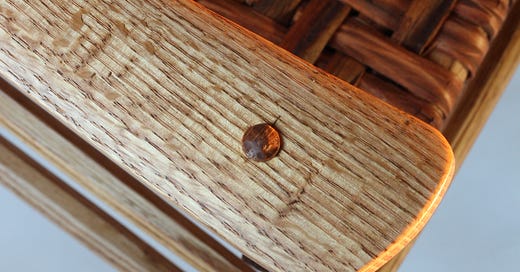I’m approaching the point in the year where my teaching schedule takes the front seat, and commissions and new ideas are pushed to the margins. The magnolia’s are starting to bloom around midcoast Maine, and with that, visitors are starting to return. There’s always an energy at this time of year. The snow drifts have all melted away and it feels like every business is rushing to add a fresh coat of paint to things before Memorial Day arrives. I’m no different. I’m framing out a new shop bathroom this week in preparation for the upcoming teaching season.
With teaching season approaching, it’s time to gather the resources from last year’s classes and take assessments. There are upcoming chairmaking classes. Chairmaking is not static (it’d be so much easier if it was). In some cases, my methods and approaches have changed. Or I’ve changed the dimensions of a chair (which changes the story sticks, the handouts and gauges, the cut lists, the material prep, etc.). Or a material becomes challenging to obtain - such as hickory bark - and I need to make substitutions [If you have a reliable hickory bark source, and you’re willing to share it, please send me a message. ]
As I prepare this year, I’m working through two teaching concepts that evade me. One is a concise explanation of my design process. “Messy” is the best way to describe how I go about describing a new chair idea. And “messy” may be generous.
I’m working to tighten it. I’ll share it here once it’s buttoned up.
The other point of emphasis this year is on “finishing” a greenwood chair. I don’t mean which oil or topcoat, but how to approach the chair. The challenge to teaching finishing during a greenwood chair class is that the topic is all encompassing. Decisions are made while splitting out the log that impact the finish choices. The work on the shavehorse is a finish surface. “Finish” is not relegated to the last steps (though it does occur at the end).
Keep reading with a 7-day free trial
Subscribe to With Working Hands to keep reading this post and get 7 days of free access to the full post archives.



